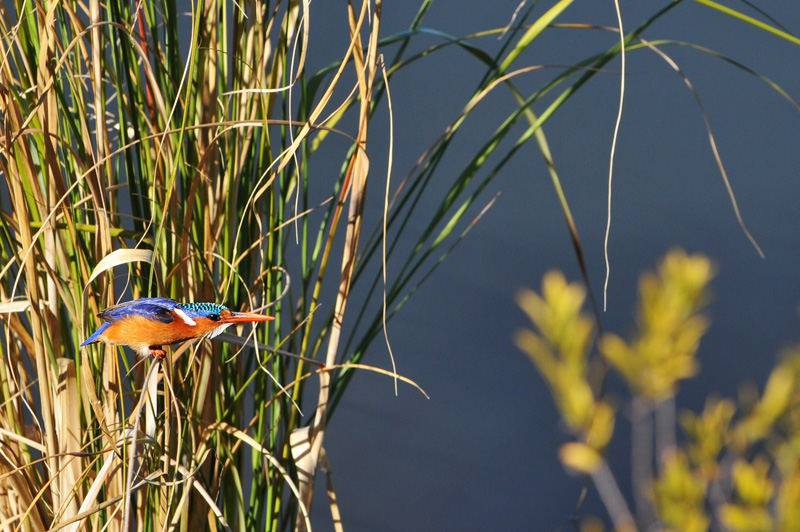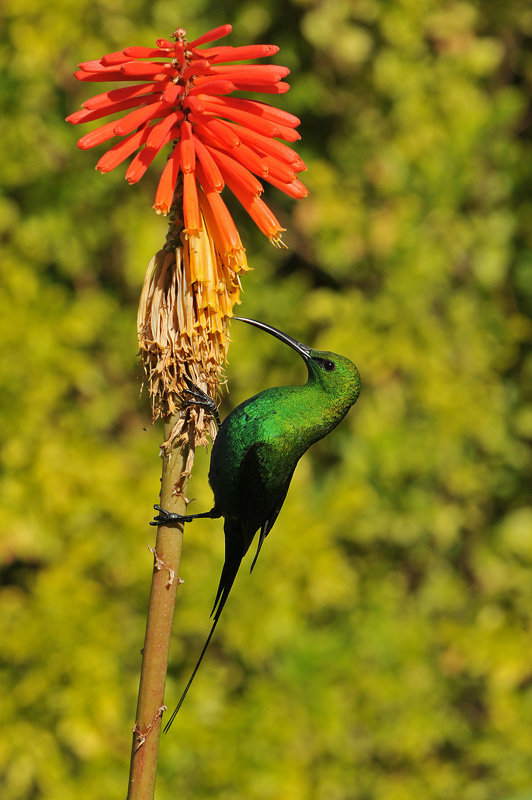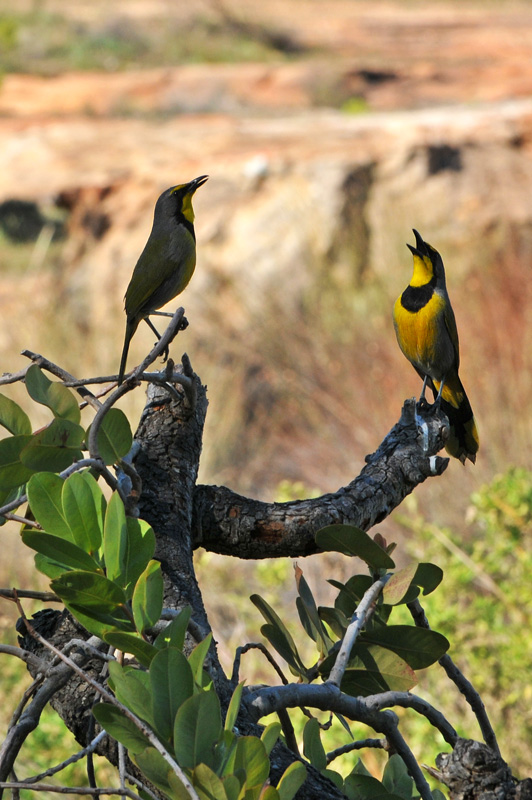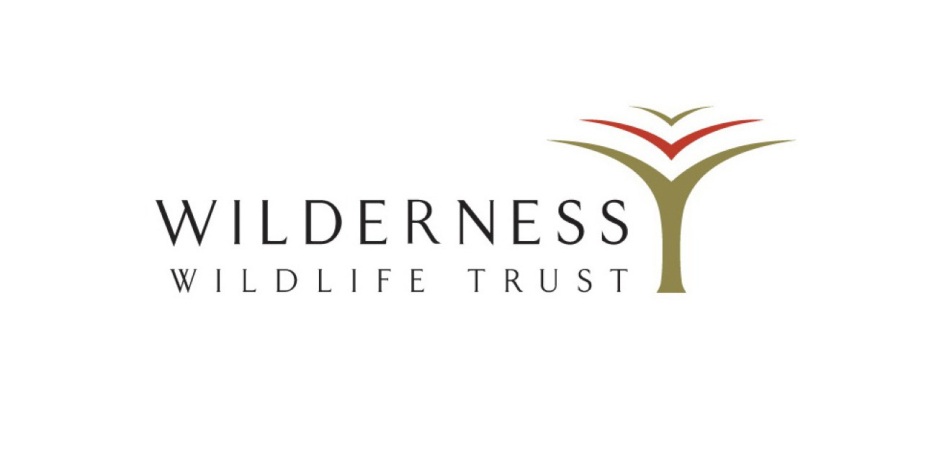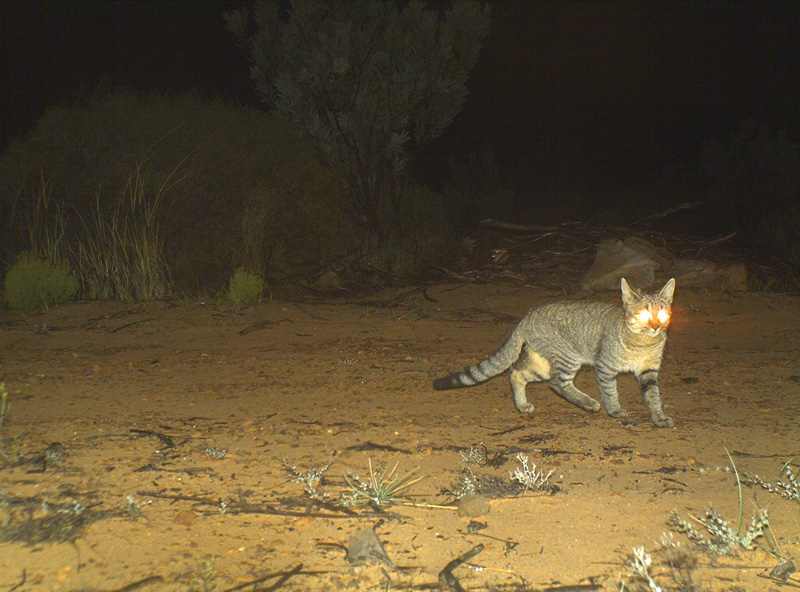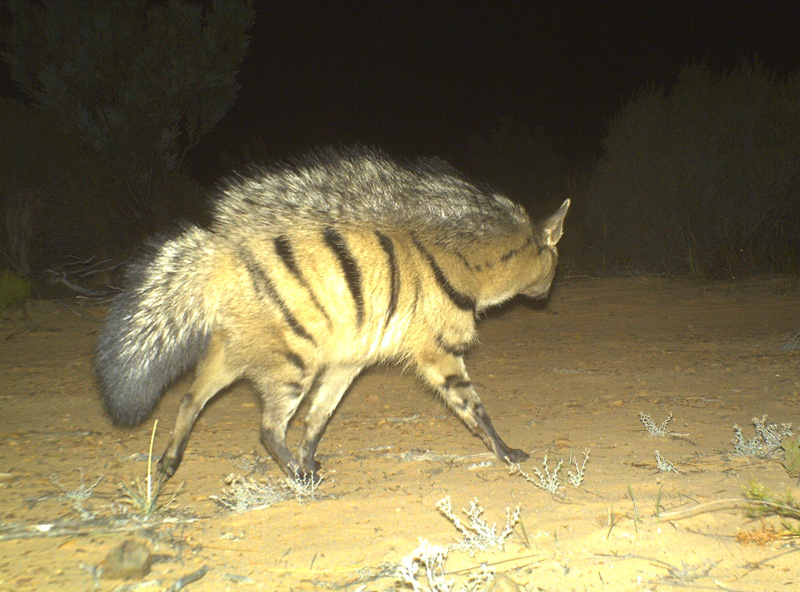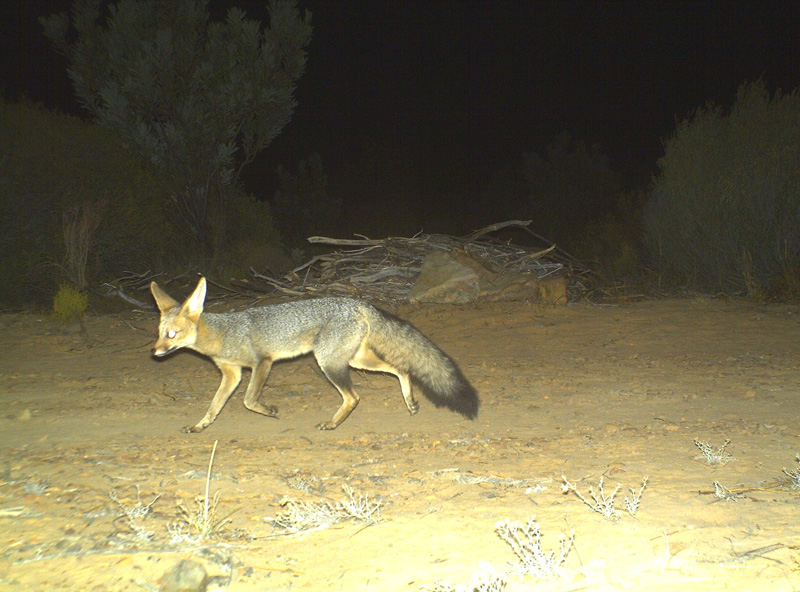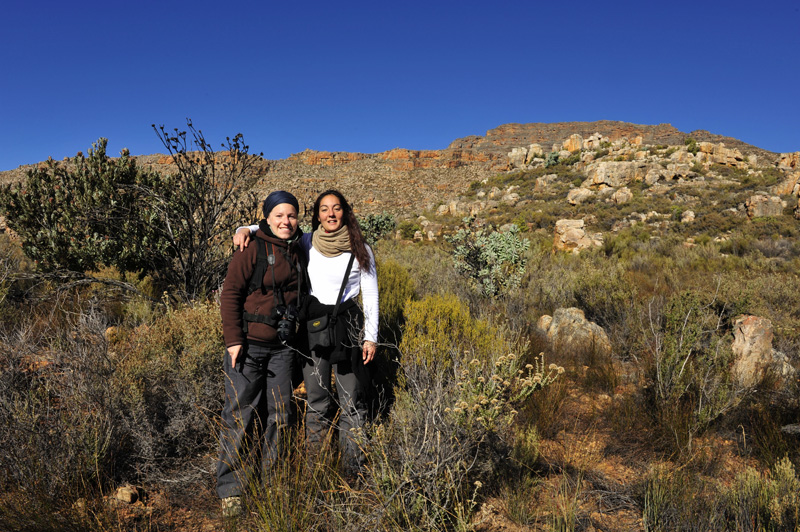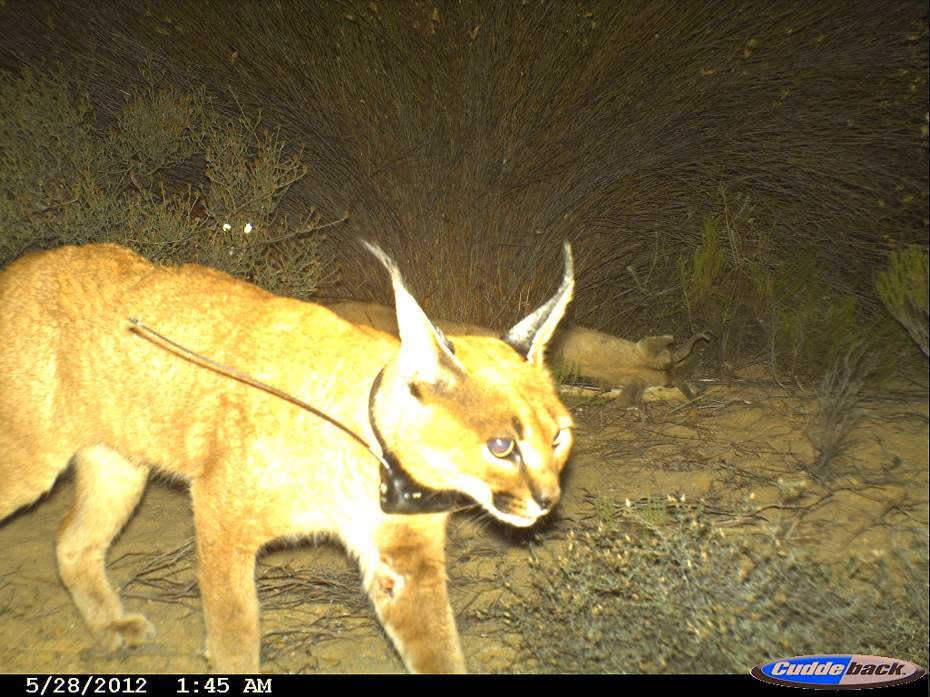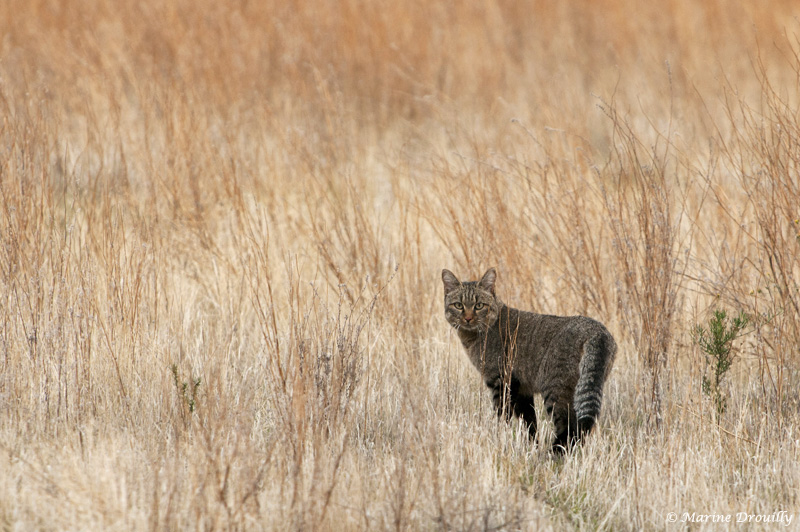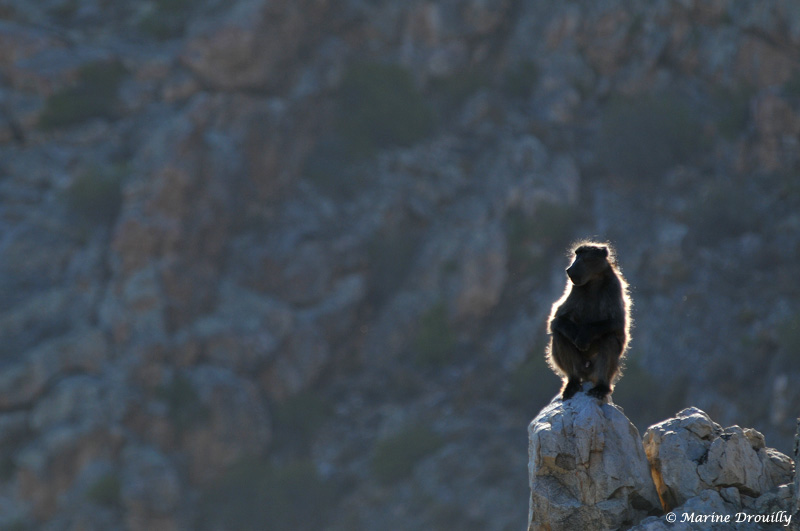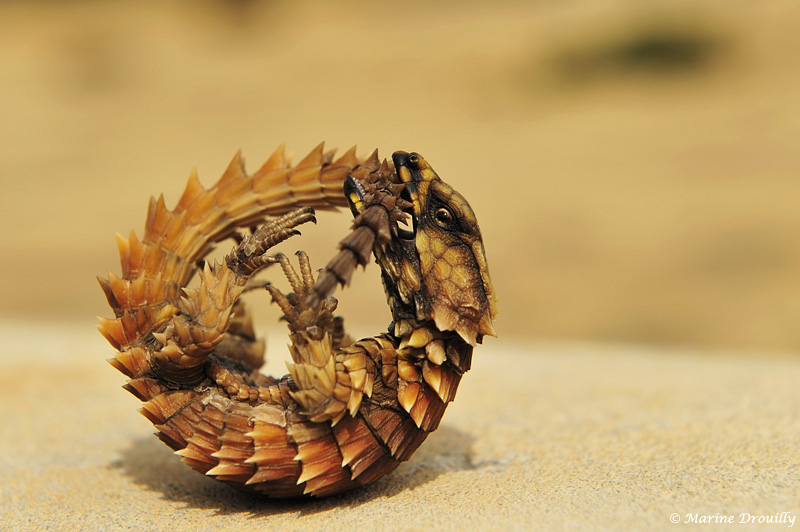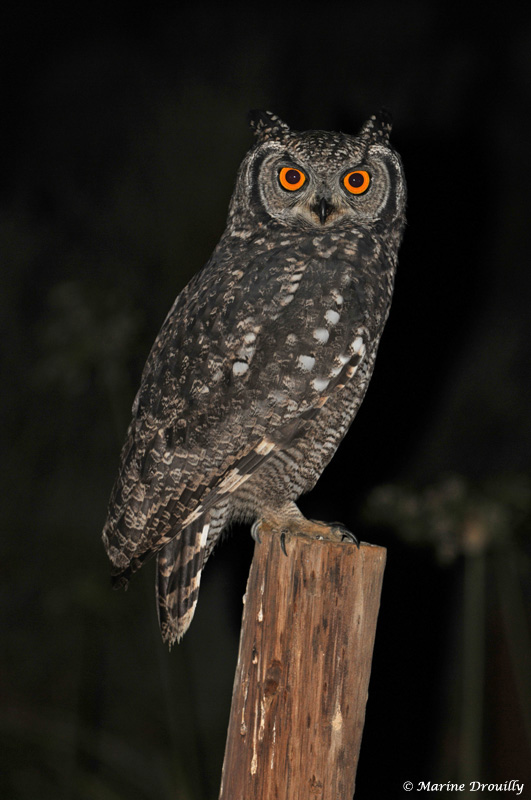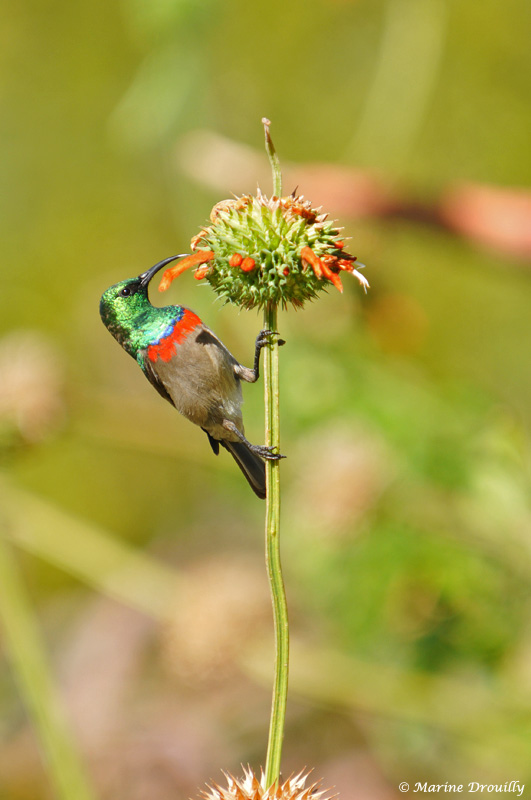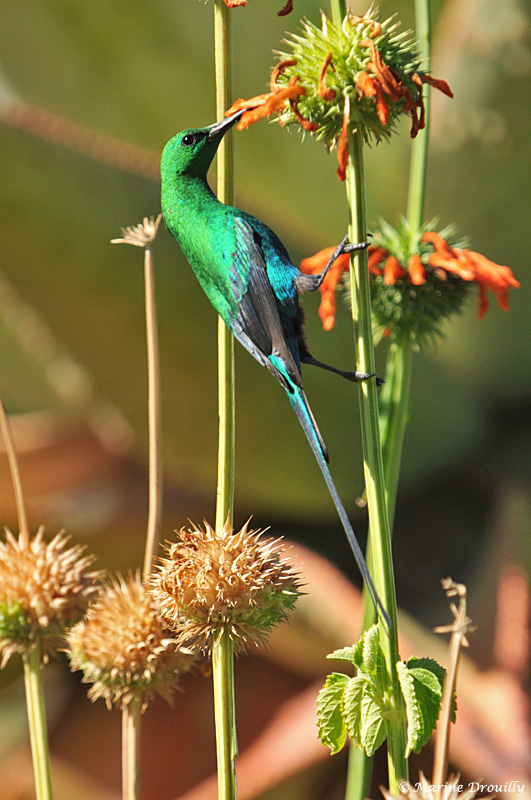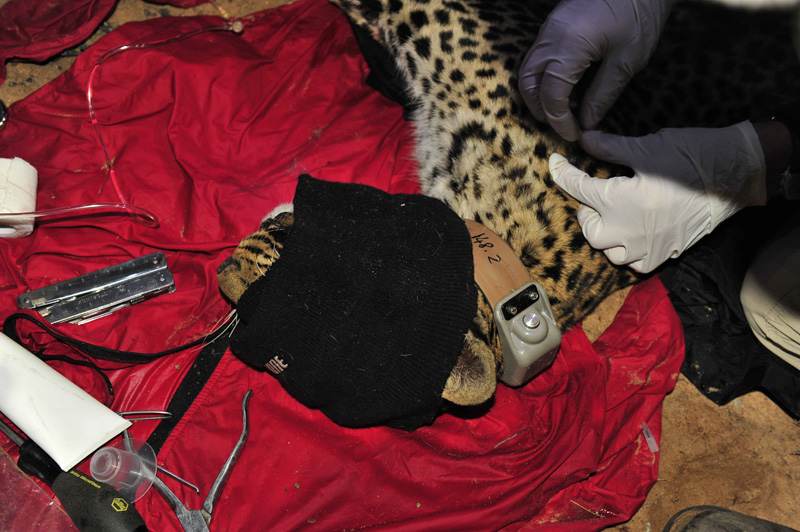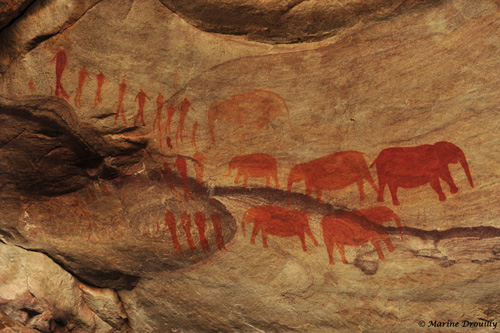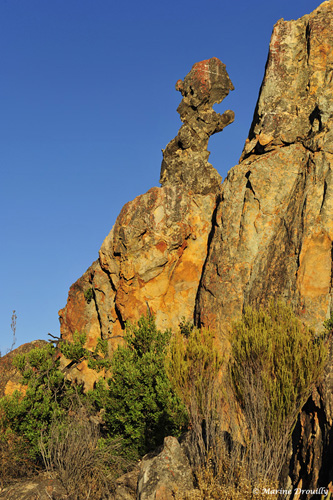Good evening guys,
Today, I’m writing you with a huge grin on my face 🙂 (even bigger than that), probably the same as Meg’s some days ago…
Are you guessing what I’m trying to tell you?? Yes, it is with great emotion and delight that I want to announce you that we caught a caracal, well no, two caracals (let’s kill two birds with one stone!). I have to tell you that story…
On the night of March, 30th, Quinton went to Bushmans Kloof, a beautiful lodge in the northern Cederberg Mountains (www.bushmanskloof.co.za), to set up one of our newly developed safe rope netting traps to capture caracals for research purposes (I posted a picture of it some weeks ago on the blog).
Just a week later, on the 8th of April, the Bushmans Kloof rangers reported a springbok that had been killed by a caracal. Regardt Boshoff (the head ranger at Bushmans Kloof) contacted Quinton and it was decided to place the kill in the cage to see if the caracal could be captured.
The same day, at 9pm, while we were having a braai at Meg’s place to celebrate her first eagle capture and to say goodbye to Victor who’s going back to Spain, we received a call from Bushmans Kloof… A caracal was trapped in the cage! I couldn’t believe it, it was so fast, not even a week after we set up the trap!
We rushed to Matjiesrivier to gather all the equipment, the collar, the receiver… and off we went, to Bushmans Kloof, 2 hours and a half on dirt roads flooded by the recent rain. We arrived there at 11:30 pm and checked the trap. There was a caracal in the cage, a small one we first thought was a female. It turned out to be a young male of about 6-8 months old.
The little guy had fed a lot on the kill and was in very good condition. It was decided not to collar him because he wasn’t yet fully-grown. We still took all the usual measurements and placed the caracal back in a wooden box where he could wake up slowly.
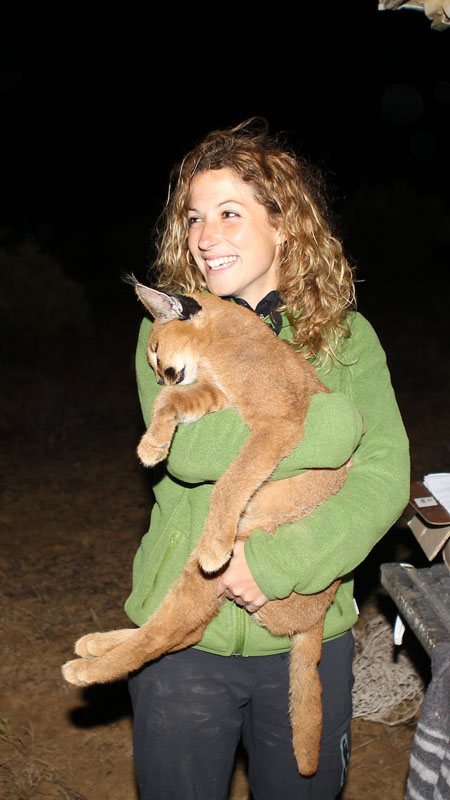
I told you I was smiling! The youngster and I at Bushmans Kloof. Picture: Victor.
A decision was made to set up the trap again in an attempt to catch the young male’s mother (it was impossible that such a small guy could have killed a springbok of more than 30kg). Quinton and I went back to Matjiesrivier and arrived there at 3:15 in the morning, tired, ready to get some hours of sleep. But the caracals decided otherwise! At 7:30 am on the 9th, Quinton knocked at my door: Bushmans Kloof (BK) had called again and a second caracal was trapped in the cage! It was probably the mother of the youngster. We arrived at BK at around 9 am and found a female in the cage. She was pretty old with some broken teeth from old injuries (perhaps kicked in the face by an antelope?) and weighed 9.7kg, average for a female. She was still in good shape and was obviously fit enough to kill an adult female springbok of over 30kg. Cats are amazing!

Checking if the female caracal is anaesthetized after injecting the drug. Picture: Graham from Bushmans Kloof
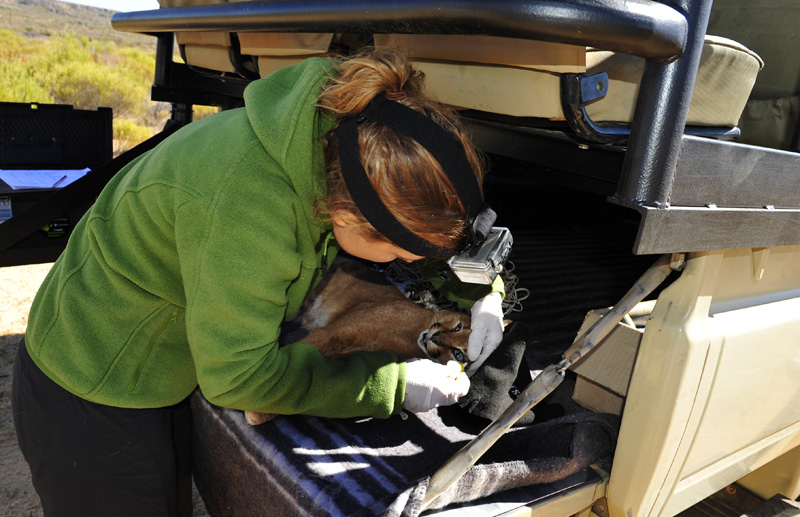
I am putting some eye drops in the caracal’s eyes, to prevent them from being dry during the anaesthesia. Picture: Quinton Martins.
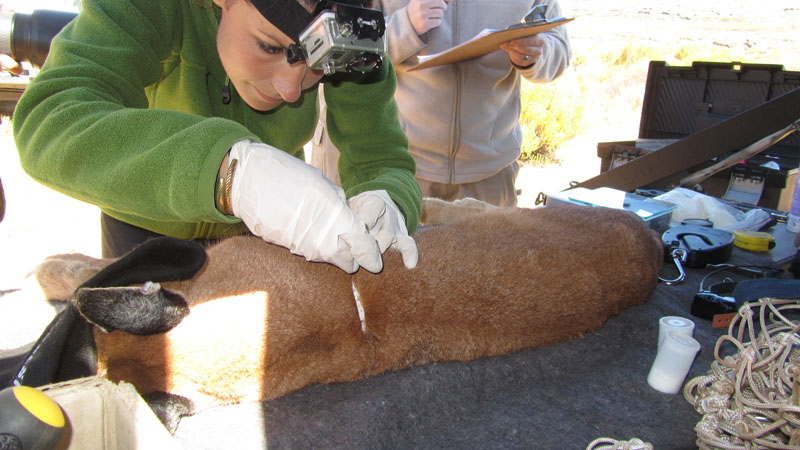
I am taking some measurements on the caracal while James is recording the data. Picture: Graham from Bushmans Kloof.

The anaesthetized female caracal. Picture: Marine Drouilly.
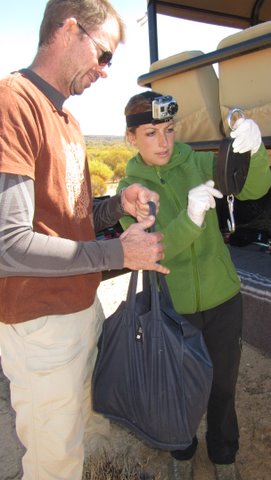
Quinton and I are weighing the cat. Picture: Graham from Bushmans Kloof.
The cat was fitted with a small GPS collar (175g), which will store 12 GPS fixes a day and release the collar on the 30th September thanks to its drop-off mechanism. At 10:45 the caracal was released and quickly disappeared into surrounding bushes. It was an emotional moment!!

Releasing of the collared female caracal into the wild. Picture: Marine Drouilly.
The rangers at Bushmans Kloof are going to help with the monitoring of the collar points and the caracal, which is great and I would like to take advantage of this post to thank them, especially Regardt Boschoff (head field guide) and James Basson (assistant general manager). Thank you for your assistance with the monitoring of the cage and the trapping and for your help in the future monitoring of this cat. Many thanks also to Graham and Ronel, the general managers of Bushmans Kloof for your hospitality and the perfect lunch after the capture! And of course, a big thank to Quinton Martins for giving me the opportunity to be part of this study on these amazing cats and for teaching me all the trapping techniques and the processing of the felines when they are anaesthetized.
Thank you also to Mike Snethlage (http://flexipave.co.za/) for designing the rope cage and to the vet Dr Jennie Hewitt for volunteering her time to help us with the trapping this month.




